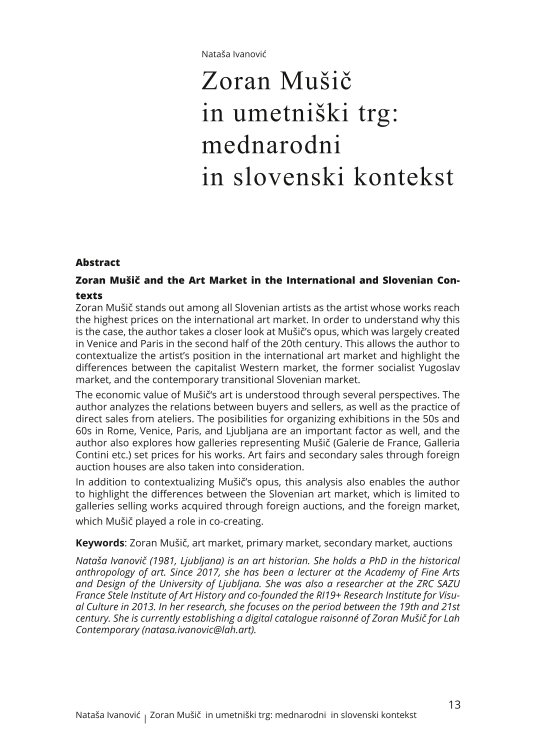Zoran Mušič stands out among all Slovenian artists as the artist whose works reach the highest prices on the international art market. In order to understand why this is the case, the author takes a closer look at Mušič’s opus, which was largely created in Venice and Paris in the second half of the 20th century. This allows the author to contextualize the artist’s position in the international art market and highlight the differences between the capitalist Western market, the former socialist Yugoslav market, and the contemporary transitional Slovenian market.
The economic value of Mušič‘s art is understood through several perspectives. The author analyzes the relations between buyers and sellers, as well as the practice of direct sales from ateliers. The posibilities for organizing exhibitions in the 50s and 60s in Rome, Venice, Paris, and Ljubljana are an important factor as well, and the author also explores how galleries representing Mušič (Galerie de France, Galleria Contini etc.) set prices for his works. Art fairs and secondary sales through foreign auction houses are also taken into consideration.
In addition to contextualizing Mušič’s opus, this analysis also enables the author to highlight the differences between the Slovenian art market, which is limited to galleries selling works acquired through foreign auctions, and the foreign market, which Mušič played a role in co-creating.




